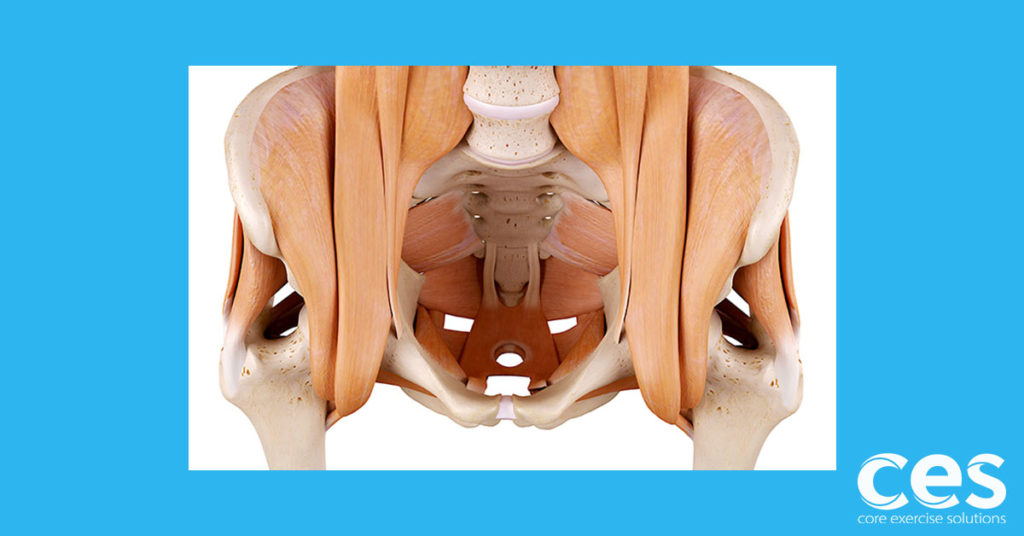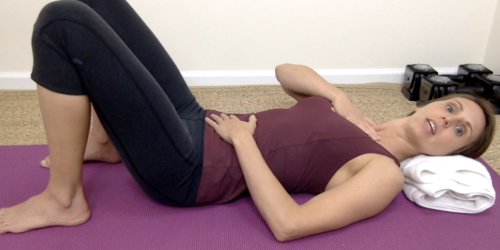This is a great question to ponder!
Pelvic floor weakness is all too common, especially after having kids. So what causes pelvic floor weakness and how long does it really take to get stronger?
The first thing to understand is the pelvic floor is a set of muscles, much like any other muscles in your body. It is mostly made up of slow-twitch fibers (70%), with fast-twitch being only 30%. What does that tell us?
The pelvic floor is built for endurance, but the fast-twitch fibers are there to catch that sneeze! The pelvic floor muscles aren’t just for helping us control our bowels. Strong pelvic floor muscles improve sex, including increasing orgasm frequency and strength. They also help us stabilize our pelvis and spine all day long and support our pelvic organs! This is an endurance workout for sure.
Considering how much the pelvic floor does, would there be any benefit to holding the muscles contracted all day?
NO!! And that can actually make pelvic floor symptoms worse, causing pain and dysfunction.
Our job is to make sure our pelvic floor is strong and can fully relax and contract both quickly and with endurance.
Workout: Contract quickly and release quickly. Can you do it 10 times? Fully relaxing between each one.
Hold a contraction for 10-15 seconds can you repeat this 10 times fully relaxing between each contraction or do you start to lose the hold?
This hits both the fast and slow-twitch fibers. After that, we have to trust our pelvic floor to do its job and contract as needed. Lots of daily movement helps. Long commutes and desk jobs can leave the pelvic muscles lacking in demand. It gets to rest while we sit!
So this brings us back to what causes pelvic floor weakness. All muscles in the body work on a supply and demand approach. It’s efficient! You ask muscles to work harder by increasing demand and your muscles respond by getting stronger. When you don’t ask much out of your muscles so demand is low, your muscles get weaker. It’s really the basic economics of supply and demand!
And just like that advanced economics class, things can get a little more complicated when we start talking alignment, availability, and hormones, but for now we’ll keep it simple.
Many women experience pelvic floor tightness which decreases the full range of the muscle. When a muscle can’t go through a full range of motion it gets weaker over time. Think about it as decreased demand on that range. Tightness also usually causes a steady state demand. Meaning, you’re holding the same level contraction or tension in the muscle all the time. The lack of variety in the contraction also leads to weakness throughout all contraction levels. You want a diverse portfolio for the best results. 😉
After working with over 1,000 women I’ve noticed a couple of things that happen. Let’s say 80% because no one always fits every pattern.
#1. Pregnancy causes weakness due to pelvic spreading to prepare for labor and abdominal muscles stretching to make room for the baby. This can create weakness in the pelvic floor, glutes, hips and abdominals. I joke about mom butt, but it’s a real thing. Many women notice decreased glutes postpartum and are like, “what the heck happened!”. We joke, but the glutes are a window into our pelvic floor and I often find they go hand in hand with pelvic floor strength. Having weak glutes increases your risk of pelvic floor tightness as well.
#2. Decreased sex because, well, everyone is tired! Sex takes effort, and as most moms (and dads) will tell you, effort for anything gets harder with more kids because parenting is exhausting. (At least for us mere mortals.)
Sex can help increase pelvic floor strength and it also helps improve our hormones which can naturally help maintain muscle! (Increases the good hormones and decreases the stress hormones.) Basically, sex can be a healthy part of maintaining good pelvic floor strength.
I want to add a caveat to this, though! Even though I think sex is a healthy part of a relationship and very healthy for the pelvic floor, telling women who experience painful sex to have a glass of wine and use more lube is NOT A GOOD SOLUTION!!! Just making sure that is crystal clear. Please see a pelvic floor physical therapist or check out my online program to get specific instructions if you’re experiencing painful sex. There are things you can do that go beyond this generic advice.
Ok, so that aside, most couples go through a decrease in the frequency of sex when kids come into the mix and this can play a role in the supply and demand needed for maintenance of pelvic floor strength.
#3. Decreased exercise and movement in general, especially in the early days. Keeping small humans alive often involves lots of sitting to feed them and rock them which decreases demand on the pelvic floor, and we often don’t have as much time to exercise or the energy to get it in. That decrease in demand leads to decreased strength. It’s very simple— you have to regularly overload a muscle to let it know it needs to get stronger. Without being consistent or providing enough overload, you will get weaker over time.
Nature is just trying to be efficient. Why hang on to muscle that isn’t necessary? You’ll have to feed that muscle which would increase your metabolism. Increased metabolism wouldn’t be a good thing back in the caveman days.
My advice:
- Make sure you know how to contract your pelvic floor correctly (click here for a tutorial) and that you don’t have any pelvic floor tightness which can hinder strengthening. (See a pelvic floor PT in your area, a PCES Grad or check out my online program.)
- Start moving! Exercise is healthy.
- Consider working to improve your sex life. (This can be a multi-factorial issue that goes deep on the mental and emotional side. But consider working on all the levels. I think it’s worth it, and I routinely help women with prolapse and other pelvic floor issues get back to great sex without worry! Decreasing fear and addressing our self-image can go a long way. So before you get mad at me for suggesting that you deserve great sex, take a little time to contemplate why that suggestion ruffled feathers and what you can do about it.)
Free Pelvic Floor Educational Series
Dr. Sarah Duvall, PT, DPT, CPT and the CES Team have helped thousands of women create the strength and stability needed to overcome common and not-so-common pelvic floor issues.
Join us today for this 4-part Pelvic Floor Video Series, absolutely free.
We don't spam or give your information to any third parties. View our Terms of Use and Privacy Policy.
Having trouble signing up? Click here

What do you think? Have you lost muscle over the last few years? Have you felt a decrease in the intensity or ease at which you orgasm? Do you feel like pelvic floor issues are creeping up on you and getting worse instead of better? More leaks or new prolapse?
Identifying an issue is the first step to getting it better. So— once you start working on pelvic floor strength, how long does it realistically take to get the pelvic floor stronger?
Well, this is a great question and the answer will vary for everyone.
How strong is your pelvic floor right now and what is your strength goal? If you’re really weak and have a long way to go, then it will obviously take a lot more time than someone who just needs to build a pinch of strength.
Do you have to deal with tightness or scar tissue first before starting to get stronger? This can play a role in the quality of contraction you can produce which can hinder progress.
Then we take a look at breathing, alignment, hips, abs, and more, because the pelvic floor works together with the rest of the body. Meaning— a hip issue can cause a pelvic floor issue. Fix the hip and you fix the pelvic floor. Pretty cool!
All that to say, strengthening your pelvic floor can take time and effort. You might have to dig deeper than you originally thought, but it will be worth all the work!
Related Articles
Pelvic Floor and Diastasis: What You Need to Know About Pressure Management

Join us today for this 6-part Pelvic Floor and Diastasis Video Series, absolutely free.
This course is designed for health/wellness professionals, but we encourage anyone interested in learning more about the pelvic floor and diastasis to sign up.
We don't spam or give your information to any third parties. View our Terms of Use and Privacy Policy.










